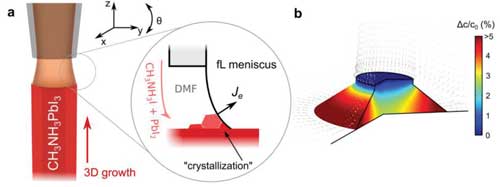Organic–inorganic metal halide perovskites have emerged as a promising optoelectronic material with exceptional structure and property tunability. This new generation of functional materials possess excellent properties such as large optical absorption, long carrier diffusion length, high carrier mobility, and low-cost solution production process.
.
The research attention in metal halide perovskites has grown exponentially since 2009, when the use of organometal halide perovskites as visible-light sensitizers for photovoltaic cells was reported (JACS , “Organometal Halide Perovskites as Visible-Light Sensitizers for Photovoltaic Cells”).
.
In the decade since, a rapidly growing body of research has utilized perovskites for applications as solar cells, photodetectors, light emitting diodes, and lasers. In recent years, structure control of organic–inorganic metal halide hybrids has been explored to lower the dimensionality from 3D to 2D, 1D, and 0D at both morphological and molecular levels (see for instance: ” Ultrathin perovskite nanocrystals suitable […]
Case Study: How PepsiCo achieved 96% cost savings on tooling with 3D Printing Technology
Above: PepsiCo food, snack, and beverage product line-up/Source: PepsiCo PepsiCo turned to tooling with 3D printing...





0 Comments